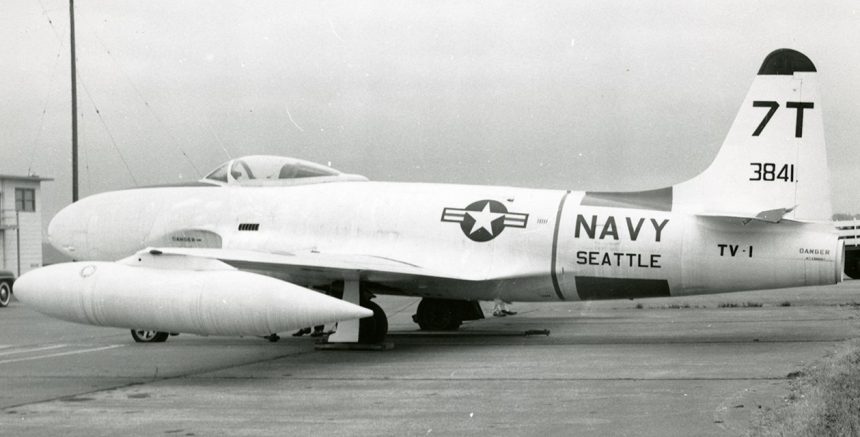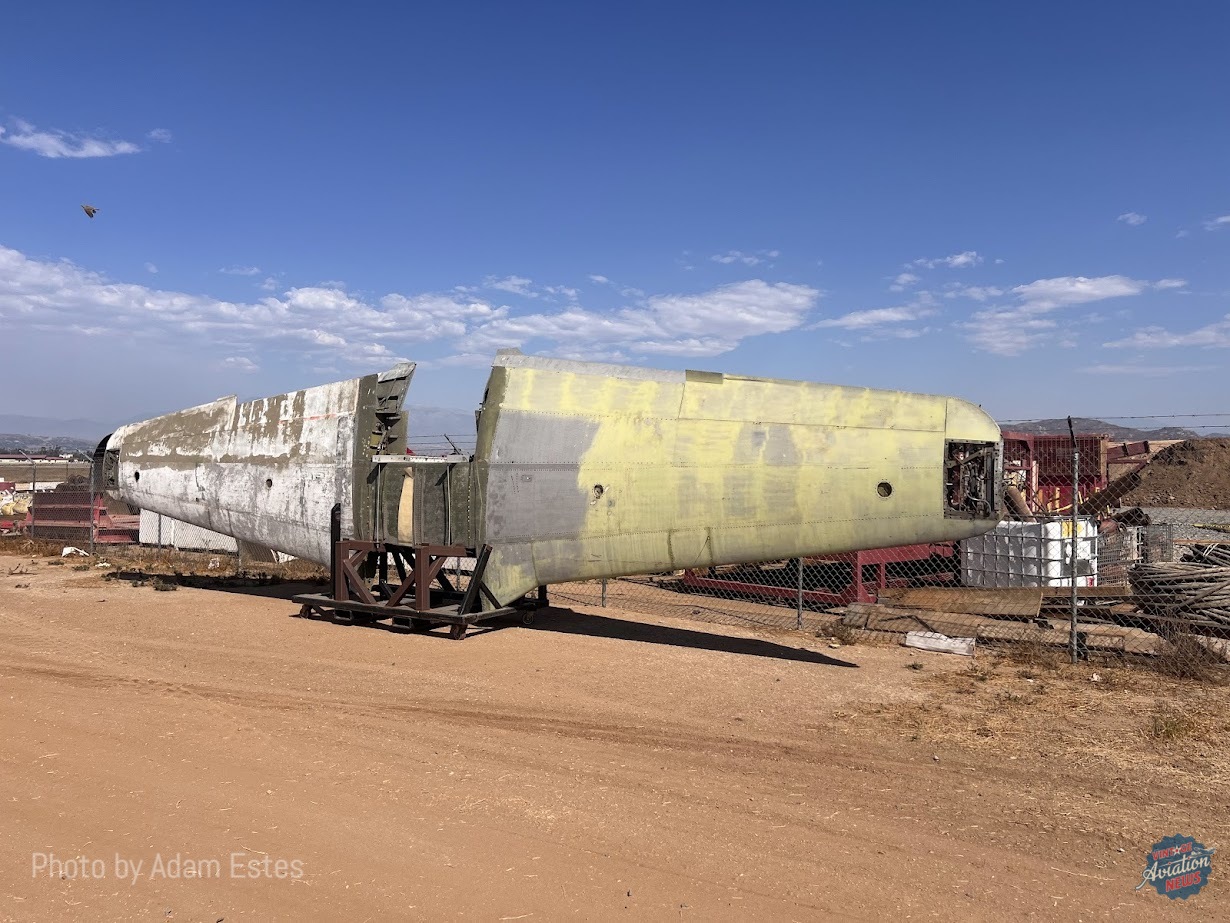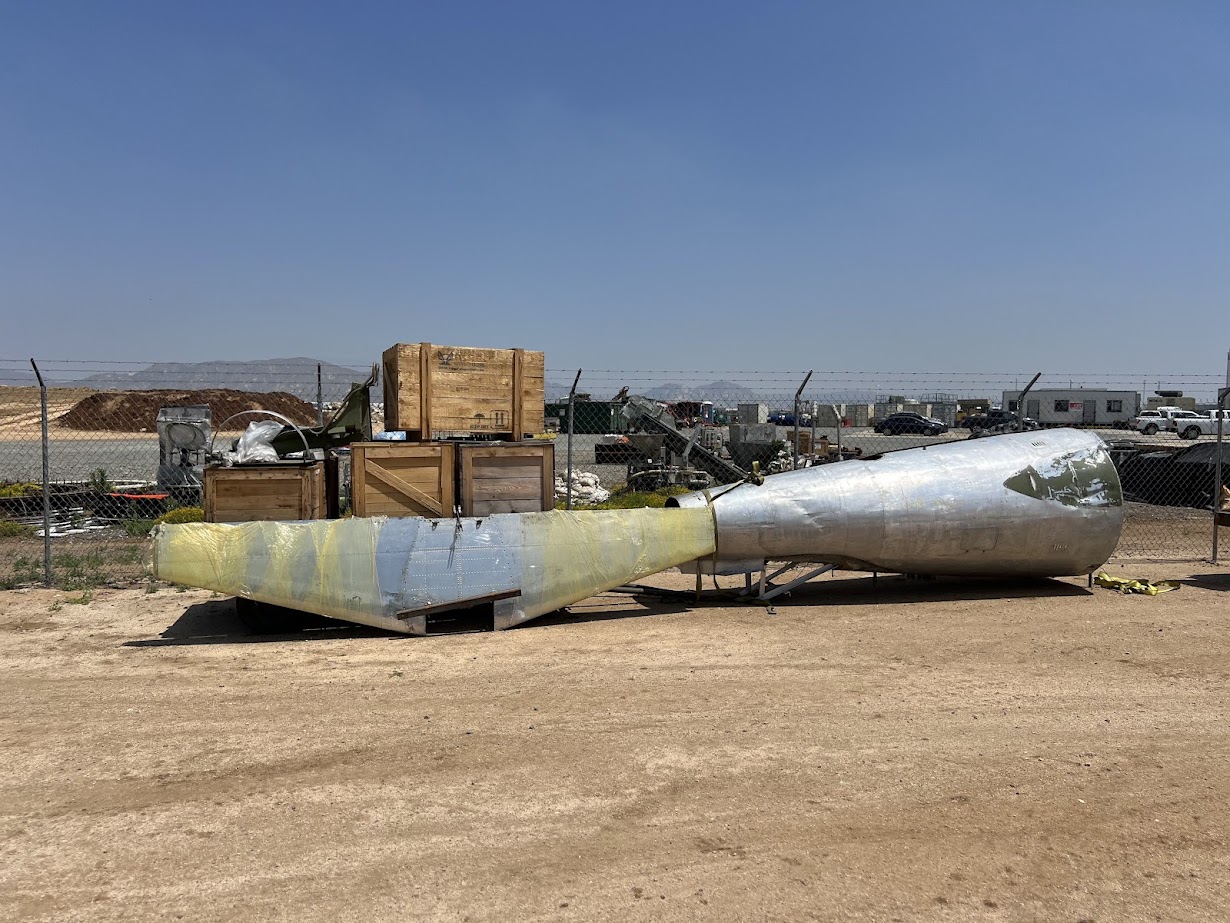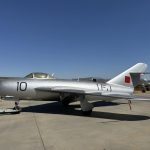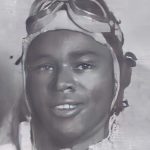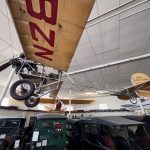Lately, the March Field Air Museum of Riverside, CA, has been acquiring a number of significant aircraft from other collections or private individuals around the western United States. One of the latest of these is a Lockheed P-80 Shooting Star, an example of the first American fighter jet to see operational service. The Shooting Star also helps round out the museum’s collection of American jet fighters, from the Bell P-59 Airacomet to the McDonnell Douglas F-15 Eagle and the General Dynamics F-16 Fighting Falcon.
This Shooting Star had originally been manufactured in Lockheed’s Burbank, CA plant as construction number 080-2074 to be delivered to the US Army Air Force as a P-80C with the serial number 47-1388. In September 1947, the US Air Force became an independent branch of the US Armed forces, and subsequently, all Pursuit aircraft were redesignated as Fighters, with the P-80 becoming the F-80. But while the Air Force was receiving plenty of jets, and the US Navy was accepting its first dedicated carrier-based jets such as the Grumman F9F Panther and the McDonnell F2H Banshee, the Navy had experimented with the P-80 in 1946, and with the delay in the delivery of Banshees and Panthers to the fleet, combined with the Navy’s sense of urgency in transitioning its aviators from piston-engine propeller fighters to jet-powered fighters, the Navy ordered 50 F-80s to be transferred for use with land-based Navy and Marine units for training purposes in order to get the Navy aviators of Fighter Squadron 52 (VF-52) and Marine aviators of Marine Fighter Squadron 311 (VMF-311) acquainted with jet aircraft. In 1950, the TO-1s were redesignated at TV-1s, but as just as the Korean War started, the sought-after Banshees and Panthers began going into operational service in large numbers, with the TV-1s being reassigned to reserve units, and becoming the forerunners to a Navy variant of the Air Force’s T-33 trainer, the TV-2, along with a further navalised development of the TV-2, the T2V SeaStar.
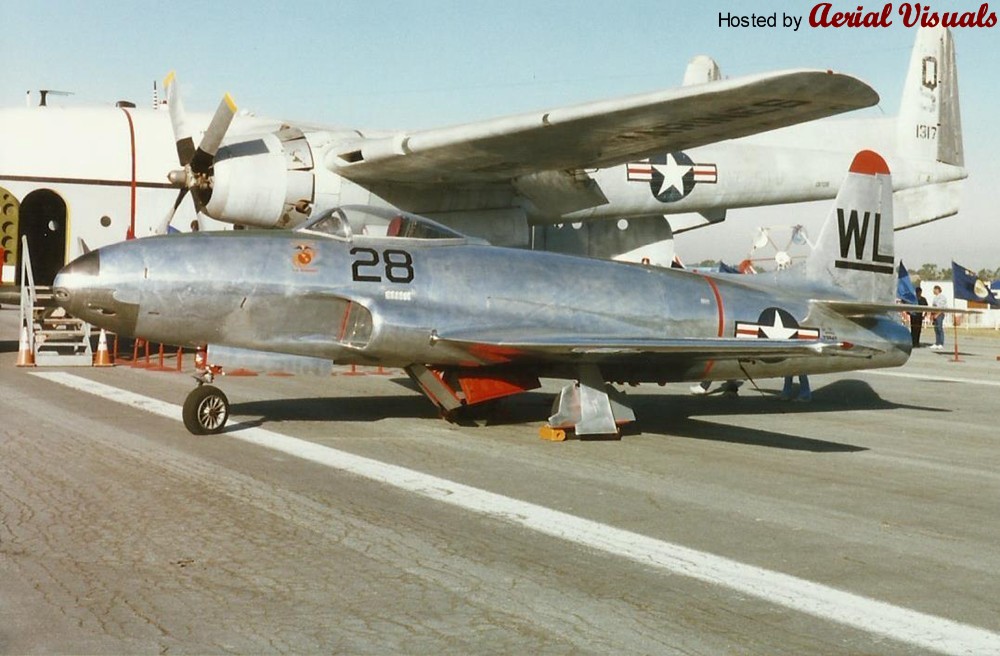
In September 1948, F-80C 47-1388 was accepted by the US Navy as TO-1 Bureau Number 33841. The aircraft was subsequently assigned to several Naval Air Stations across the country, from San Diego to Whiting Field, FL, Kingsville, TX, Corpus Christi, Oakland, CA, and concluded its career in 1956 at the Naval Air Reserve Training Unit (NARTU) at NAS Seattle at Sand Point. After its time as an active naval aircraft came to an end, it was made part of a local park near the base, and later sat derelict at Boeing Field before a restoration effort began in the mid-1980s at Yakima Airport, WA. Later, the aircraft’s restoration was moved to the Museum of Flight’s Restoration Center and Reserve Collection at Paine Field in Everett, WA. However, work on the project would grind to a halt as the team at Paine Field had to prioritize other projects that were to be displayed at the main museum facility at Boeing Field, officially on loan to the Museum of Flight by the National Naval Aviation Museum in Pensacola, FL.
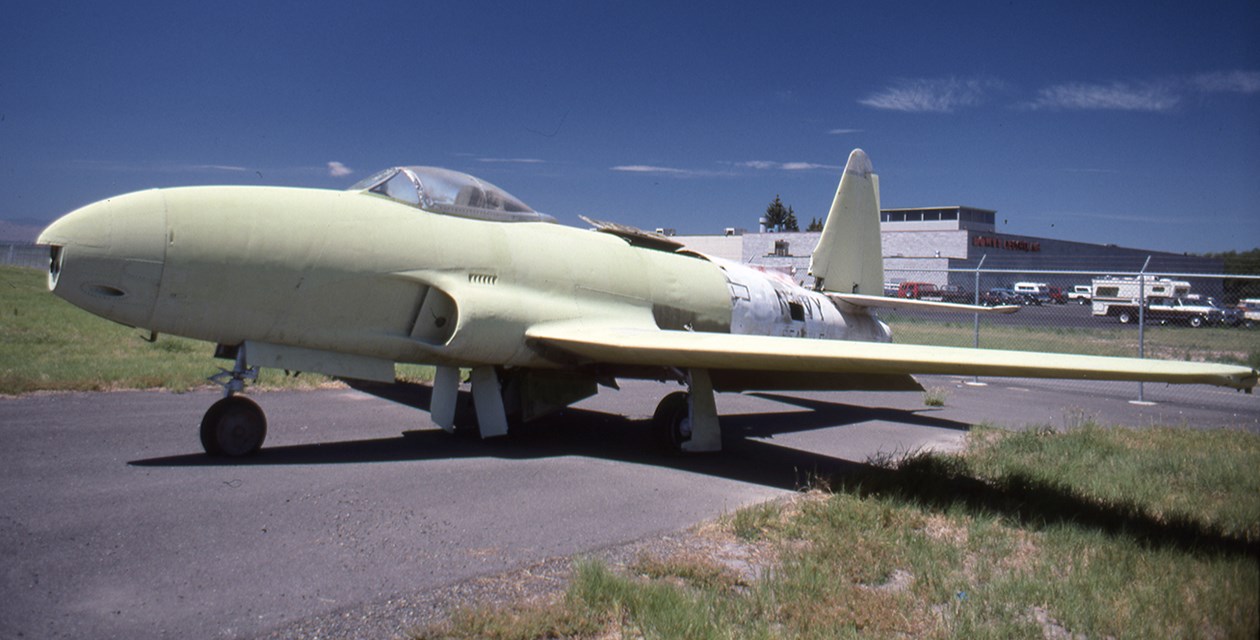
At the end of 2023, restoration staff from the March Field Air Museum, led by Alex LaBonte Jr. and Greg Stathatos, reached an agreement with the Museum of Flight to retrieve their Mikoyan-Gurevich MiG-17F for restoration and display back into its former Royal Moroccan Air Force colors (see our article on this aircraft HERE). During this time, the idea of bringing the Shooting Star down to Riverside to join the MFAM’s collection was established, and an agreement was reached between Seattle, Riverside, and Pensacola for the aircraft to be brought back to California.
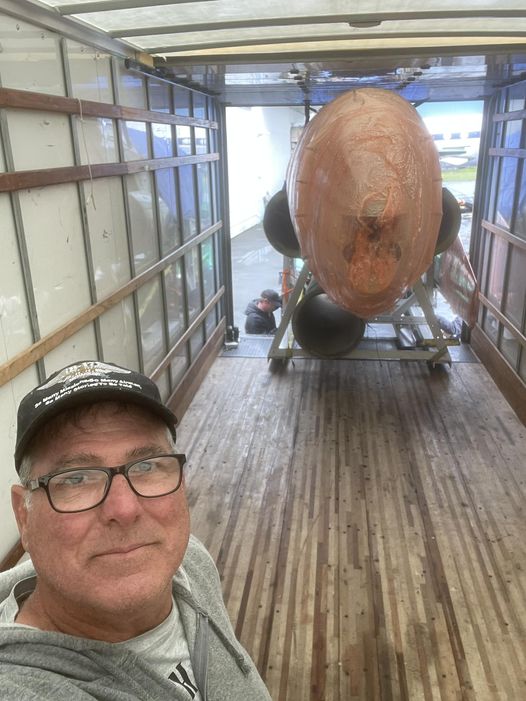
In April 2024, Greg Stathatos led a team to Paine Field to pick up the Shooting Star. The aircraft had already been disassembled and held in jigs for years as it sat in storage, which made packing the aircraft onto the trucks being used to drive the jet to California that much easier. Greg Stathatos also runs the website B-17 Archaeology, which in addition to overseeing the restorations of three static B-17s in California (see our article on Greg’s work on the Castle Air Museum’s B-17 HERE) features documentaries made by Stathatos on the surviving B-17s. During his visit in Seattle to retrieve the Shooting Star, Stathatos was granted access to film inside the MOF’s B-17F, formerly known as Boeing Bee, for an upcoming documentary.
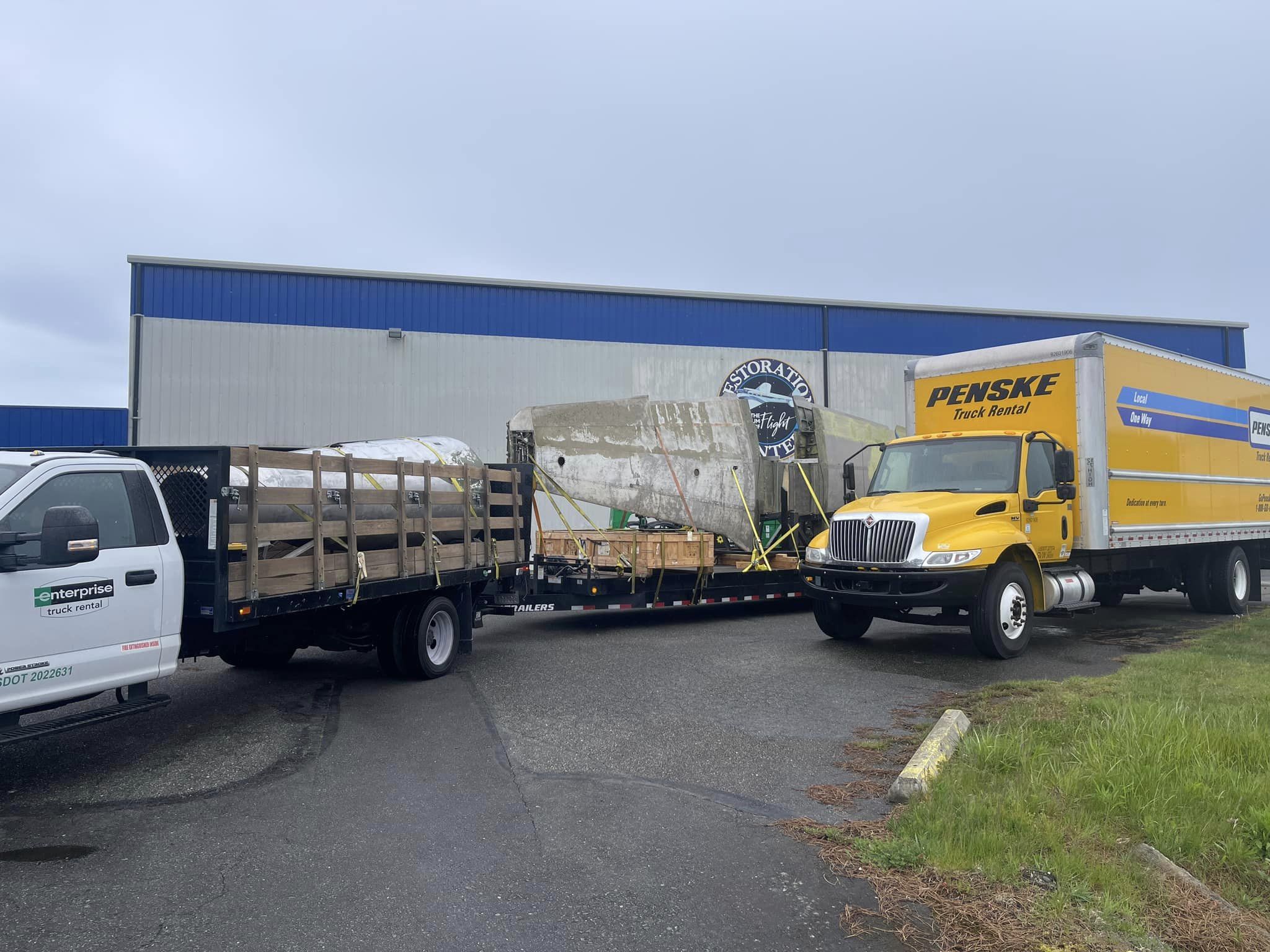
With the Shooting Star’s forward fuselage loaded into a rented box truck, the tail being put in the back of a large pickup truck, and with the wings being towed by the pickup on a trailer, the MFAM recovery team set off for home. Just 28 hours later, they had made it to the museum in Riverside, with the disassembled vintage fighter arriving safely. Now, the museum is keeping the aircraft in storage as they finish other projects such as the MiG-17F also brought down from Seattle, but when the Shooting Star’s restoration is completed, it will likely be placed on display alongside the museum’s other early Cold War fighters, such as its three F-86 Sabres, F-84C Thunderjet and F-84F Thunderstreak.
Interestingly, 47-1388/33841’s arrival at the MFAM places it in close proximity to one of its sister aircraft, F-80C 47-1387, which later became TV-1 BuNo 33840, and was assigned to VMF-311 at MCAS El Toro, CA. After it was stricken from the Navy, BuNo 33840 made a round-about journey back to El Toro as part of the Flying Leathernecks Aviation Museum (FLAM), initially being displayed there from 1993 to 1999, when MCAS El Toro was closed and the museum moved to Miramar, operating until 2021, when budget cuts forced the Marines to pull their funding back. Fortunately, the directors of the FLAM and the developers of the former El Toro air base (now the Orange County Great Park in Irvine, CA), made an agreement to provide the museum a new home as one of several museums planned to open in the park as highlighted in our article HERE: Today, TV-1 BuNo 33840 is inside a former KC-130 hangar, being restored alongside other USMC aircraft for future display in the new museum, now set to open in 2026. To see more information about the March Field Air Museum, visit March Field Air Museum website.







